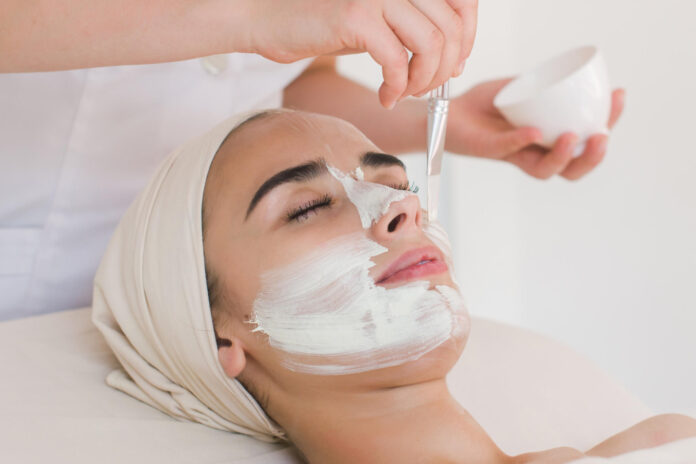Chemical peels have emerged as one of the most effective cosmetic procedures to rejuvenate the skin and address various concerns like acne scars, pigmentation, and signs of aging. Their rising popularity can be witnessed across the globe, including a growing demand for Chemical Peels in Dubai, where residents seek clear, radiant, and youthful skin despite harsh weather conditions. However, one recurring concern among potential users is whether chemical peels make the skin more sensitive.
What Are Chemical Peels?
Chemical peels are dermatological treatments that use a chemical solution to exfoliate the top layers of the skin. Depending on the strength and ingredients, peels can be categorized into:
- Superficial peels (mild acids like alpha-hydroxy acids)
- Medium-depth peels (e.g., trichloroacetic acid)
- Deep peels (e.g., phenol-based solutions)
How Do Chemical Peels Work?
The principle behind chemical peels is controlled damage. When the skin is exposed to a chemical exfoliant, it triggers the skin’s natural healing mechanism. The old, dull layers of skin are peeled away, revealing a smoother, more vibrant layer underneath.
The strength and depth of the peel determine how much exfoliation occurs. For instance:
- Superficial peels work on the epidermis.
- Medium peels penetrate the upper layers of the dermis.
- Deep peels go even deeper, often requiring longer recovery.
Do Chemical Peels Make Skin Sensitive?
Yes, chemical peels can make the skin temporarily more sensitive, especially in the days and weeks following the procedure. Here’s why:
1. Loss of the Protective Barrier
Chemical exfoliation removes the outermost layer of skin, which serves as a natural barrier against environmental aggressors. This exposes the newer skin underneath, which hasn’t yet developed its full defense mechanisms, making it more vulnerable to:
- UV rays
- Harsh skincare ingredients
- Pollutants
2. Inflammatory Response
Peels trigger an inflammatory response in the skin to jumpstart healing. During this period, the skin may appear red, feel tight, and be more reactive than usual.
3. Disruption of Skin pH
Some peels temporarily alter the skin’s pH balance, making it more alkaline than usual. This shift can disrupt the skin microbiome, leading to increased sensitivity and irritation.
4. Increased Blood Flow
After a peel, there is an increase in blood circulation to the skin to support healing. This can result in flushing and a heightened sensitivity to heat or touch.
Signs of Post-Peel Sensitivity
Some of the common indicators that your skin is experiencing post-peel sensitivity include:
- Redness and irritation
- Tightness or dryness
- Mild swelling
- Increased sensitivity to skincare products
- Heightened photosensitivity (sun sensitivity)
Tips to Manage Skin Sensitivity After a Chemical Peel
Managing post-peel skin is crucial to ensure proper healing and reduce discomfort. Here are some dermatologist-recommended tips:
1. Use Gentle, Hydrating Skincare
Avoid active ingredients like retinol, vitamin C, and AHAs/BHAs for at least a week post-peel. Stick to:
- Fragrance-free moisturizers
- Soothing serums with ingredients like hyaluronic acid and aloe vera
2. Avoid Sun Exposure
The skin becomes photosensitive after a peel. Protect it with:
- Broad-spectrum sunscreen (SPF 30 or higher)
- Wide-brimmed hats or umbrellas when outdoors
3. Avoid Harsh Physical Exfoliation
Do not use scrubs, cleansing brushes, or exfoliating tools for at least a week or more.
4. Stay Hydrated
Drink plenty of water to keep the skin hydrated from the inside out.
5. Avoid Heat and Sweating
Skip saunas, hot showers, and intense workouts immediately post-peel, as heat can worsen irritation.
Are All Skin Types Equally Affected?
No, certain skin types are more prone to post-peel sensitivity:
- Dry skin types may experience more flaking and tightness.
- Sensitive skin types may have prolonged redness.
- Darker skin tones need special care as they are more susceptible to post-inflammatory hyperpigmentation (PIH).
FAQ’s:
Q1. Can I wear makeup after a chemical peel?
It’s best to avoid makeup for at least 24–48 hours after a superficial peel and longer for deeper peels. Applying makeup too soon can irritate sensitive skin and interfere with the healing process.
Q2. Is it normal for skin to peel and flake after a treatment?
Yes, mild to moderate peeling is a sign that the treatment is working. It indicates that the outer layer is shedding to reveal newer skin. Avoid pulling or scrubbing off peeling skin.
Q3. How can I tell if my skin is too sensitive for a chemical peel?
If your skin stings or burns easily, or if you have conditions like rosacea or eczema, consult a dermatologist first. Patch testing and starting with lighter peels are safer options.
Q4. Can I do a chemical peel at home, or should it be done professionally?
While mild at-home peels are available, professional treatments are safer and more effective, especially for deeper exfoliation. Improper use of at-home products can cause burns or long-term sensitivity.
Q5. How often can I get a chemical peel?
This depends on the peel type and skin condition:
- Superficial peels: Every 2–4 weeks
- Medium peels: Every 3–6 months
- Deep peels: Once a year or less
Always follow professional advice to avoid over-exfoliating.
Final Thoughts
Chemical peels are an effective way to refresh and revitalize the skin. While they do make the skin more sensitive temporarily, this effect is manageable and short-lived with the right precautions. Knowing what to expect, following post-treatment guidelines, and choosing the right peel for your skin type can ensure optimal results without long-term issues.































